Huawei TalkBand B2 review
The shiniest fitness tracker ever

If you’re not a taxi driver, what are you doing wearing a Bluetooth headset? That seems to be the feeling around this sort of gadget these days.
Seen as the toy of a sort of American Psycho-style city boy who’d probably drive into kerbside puddles just to shower pedestrians with muddy slush, Bluetooth headsets have a bit of an image problem. But Huawei is bringing them back into the limelight with the Huawei TalkBand B2.
It’s an ingenious gadget that transforms from fitness tracker to Bluetooth headset with the click of a switch. It works amazingly well too, once you get used to the action of transferring the thing from wrist to ear down.
Should you buy it? Well that’s another point entirely. At around £200 the Huawei TalkBand B2 is very expensive for what it does. Aside from being a breeze to use, its limited fitness tracking and non-existent smartwatch skills mean it should probably stay a bauble of ‘elite’ sharp-suited types we all love to hate.
Bling thing
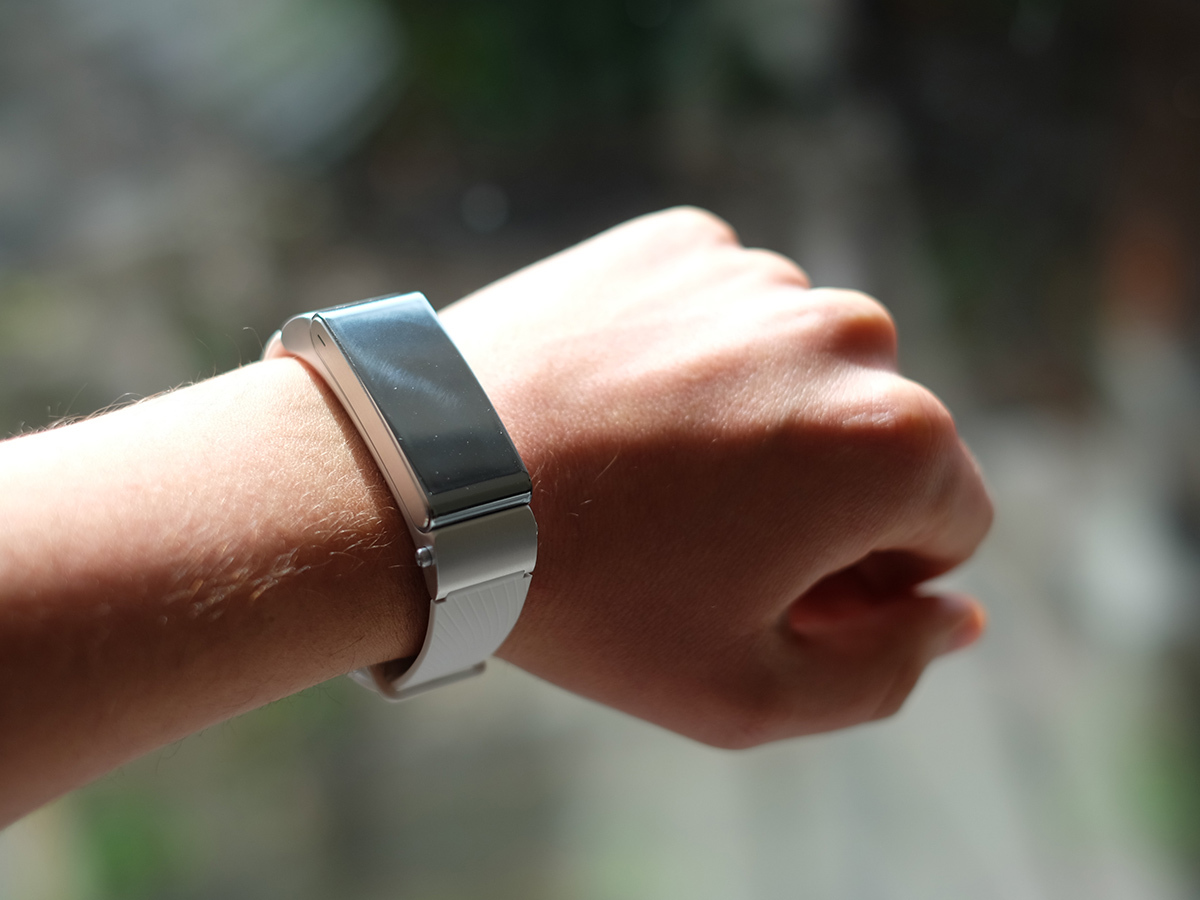
But let’s forget that for now. Just look at the thing. From the front in particular, the Huawei TalkBand B2 is pretty eye-catching. Its front is curvy and has a silvery finish, with no indication of where the screen ends and the screen surround begins.
It’s shiny and flashy, the 2015 gadget equivalent of a great big, metal show-off watch. This front part is actually the earpiece for the TalkBand B2’s wireless headset. It clips into a metal frame that stays on your wrist. If you don’t like the look of the silvery version I’m using here, Huawei also makes black and gold B2s.
The earpiece locks in with a quick-release mechanism, and there’s an unlocking button on the frame to let it loose. While the TalkBand B2 doesn’t seem all that much bulkier and thicker than something like the Fitbit Surge, take the earpiece out and it has a rubber earphone plug all ready to be bunged into your ear. Neat, right?
Big talker
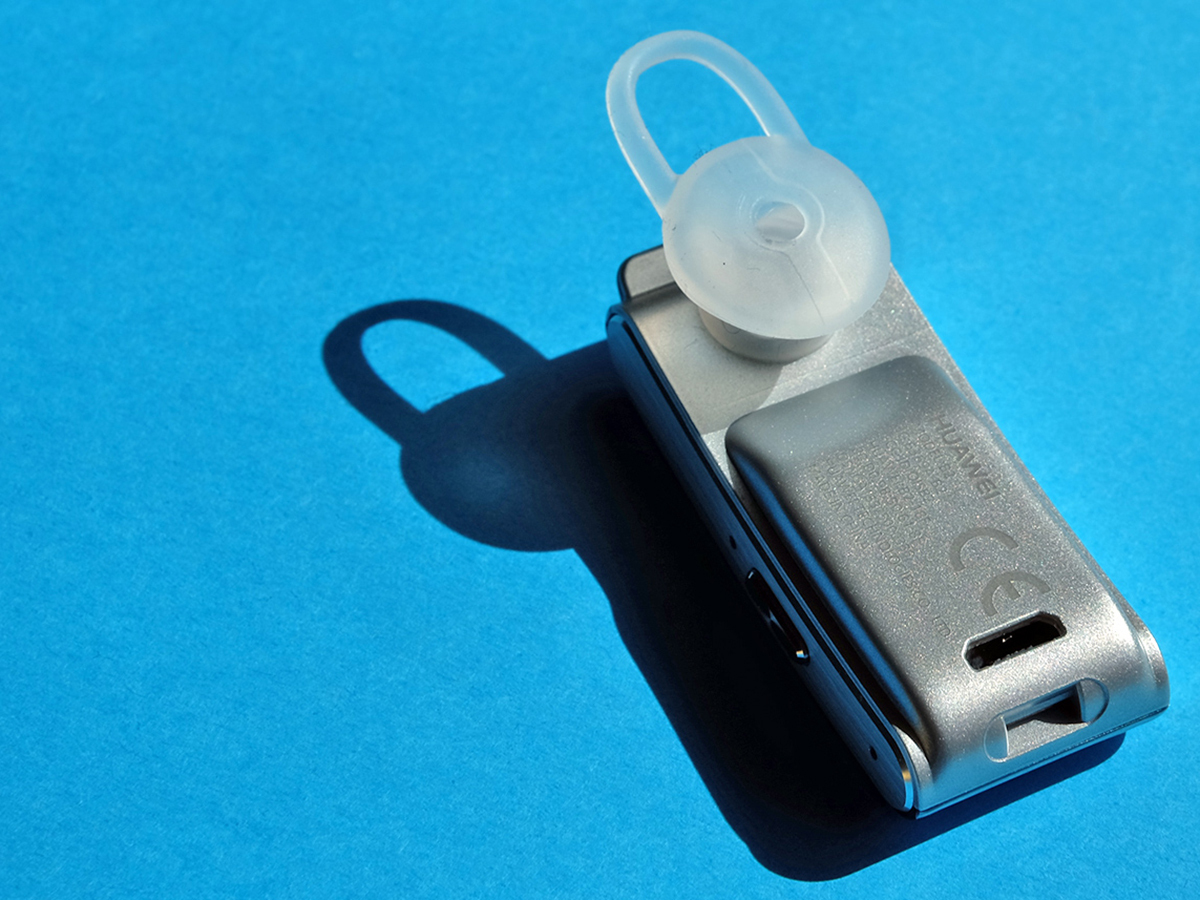
Receive a call and the TalkBand B2 will start buzzing. Release it from the frame and it’ll automatically take the call. Actually using the thing takes a bit of getting used to, and I’ll admit to receiving a fair amount of ridicule from friends during testing. But then this sort of gadget was never going to be for everyone, was it?
The bit of the TalkBand B2 left on your wrist does look like an empty shell while you’re yammering on, but then it’ll only be like that for the duration of the call, and people’s eyes are more likely to be drawn to the shiny thing poking out of your ear at any rate.
Sound quality from the earpiece is fairly strong, with good clarity and definition, if not the smoothest tone. The TalkBand B2 uses dual microphones to stop outside noise trampling all over your calls, giving it the sort of chops you’ll see in a dedicated Bluetooth headset.
As a Bluetooth headset, then, it’s perfectly good. But what else does it do?
Related › Pebble Steel review
More than ear candy
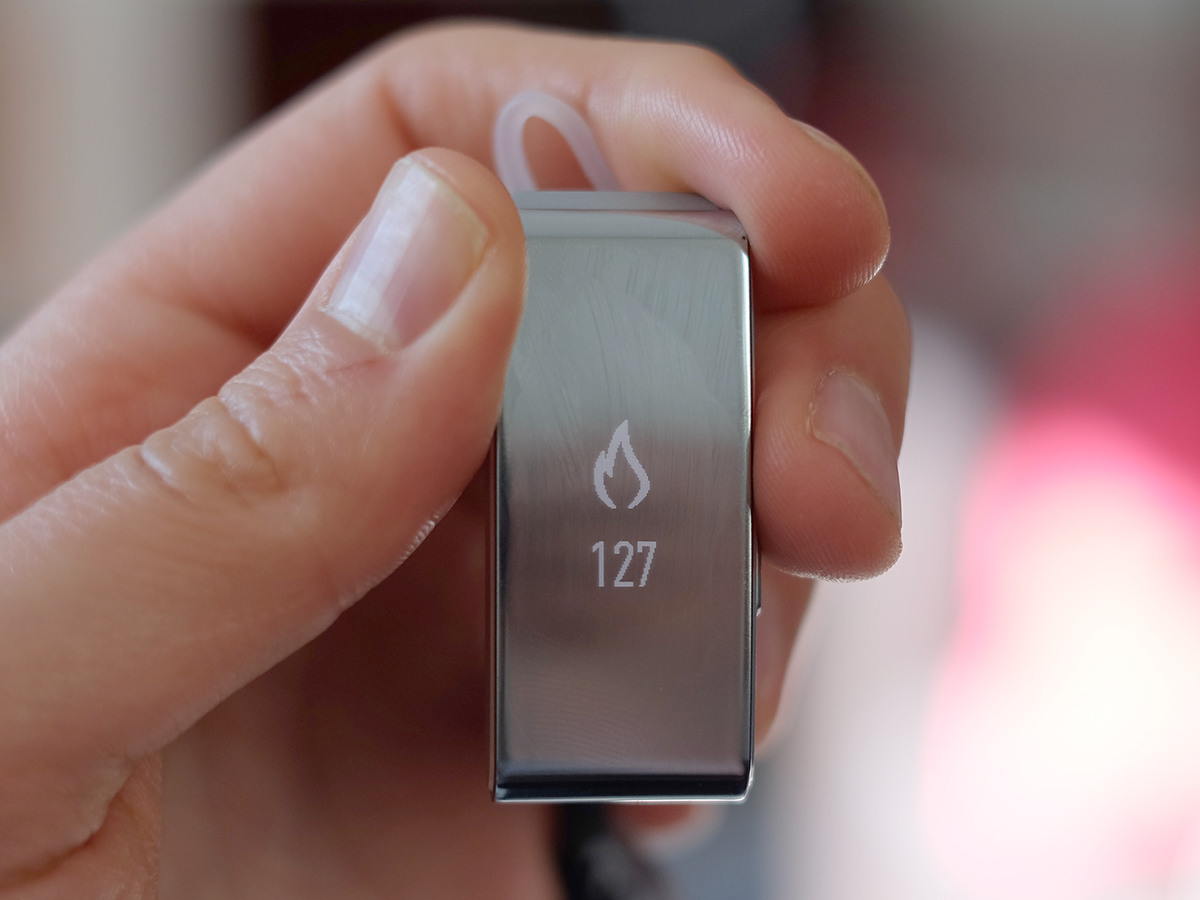
First, it’s a watch. The TalkBand B2 has a monochrome OLED screen that’s very clear indoors. In bright sunlight, thought, I just couldn’t make the thing out. This isn’t a gadget for all seasons.
It’s a 0.7-inch screen, pretty tiny compared with something like an Apple Watch, but the silvery top surface stops it from seeming compromised. Instead, it seems deliberately low-tech. It holds onto that sense of luxury even though it has about as many screen pixels as an original Gameboy.
You also get fitness and sleep tracking. The TalkBand B2 has a 6-axis gyroscope that can track pretty much any movement your arms make, translating it into step count data.
It’s not all that clever, though. It’ll count your steps, and you can make it manually check any periods of deliberate exercise if you want to time your workouts. But it’s pretty basic.
Staying simple
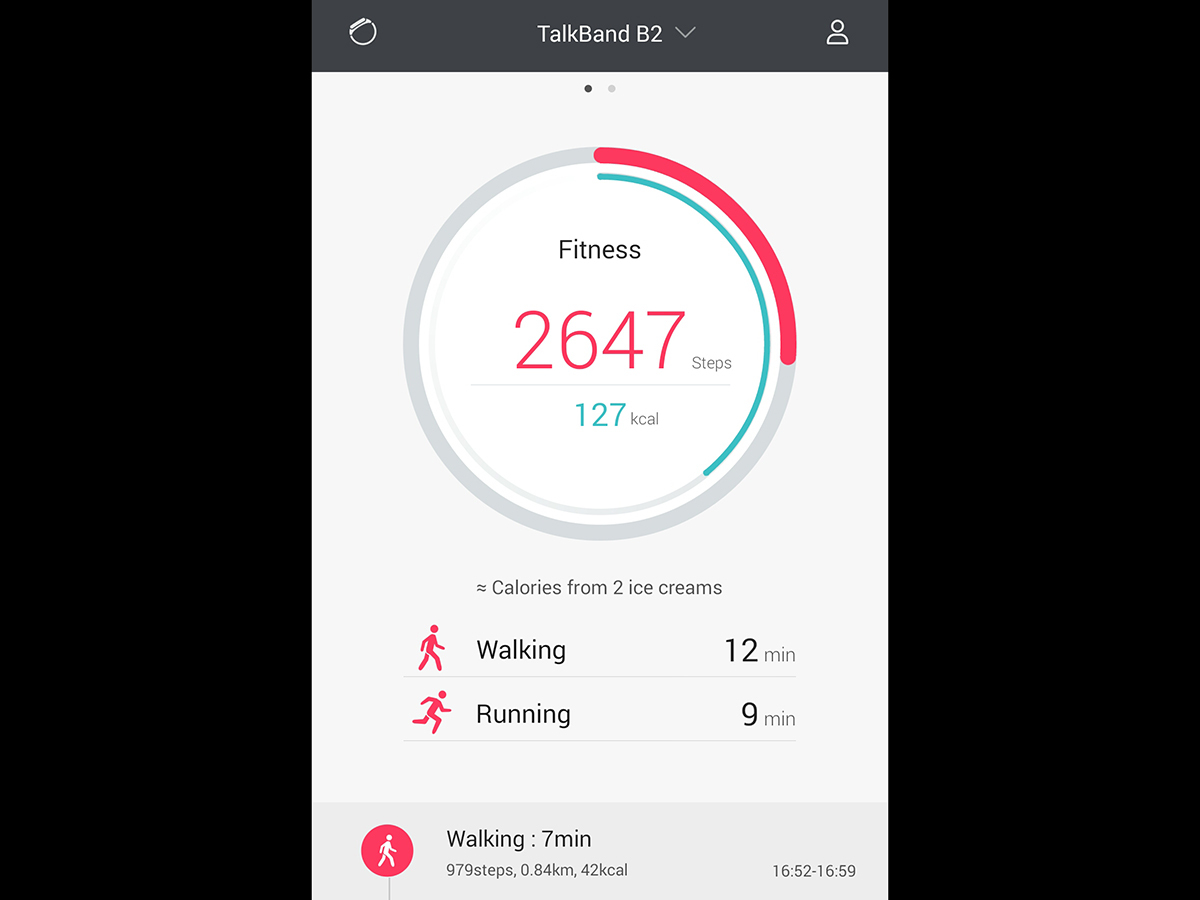
You literally flick through these few TalkBand B2 features on the band’s screen. It’s pretty responsive, and you can fire up the clock screen at any time by pressing the button on its side.
Most of what the TalkBand B2 does on the fitness it automated, though. It tracks steps automatically, and doesn’t need to be told when you’re planning on sleeping. It works this out for itself, which is a major win, making the thing even easier to live with. I find having to tell a tracker I’m about to go to sleep game-breakingly annoying.
After a night’s kip, the last screen in the B2’s interface will tell you how many hours (and minutes) you slept for. A little extra information is available in the app, available for iOS and Android.
We do mean a little, though. You get a quick summary of how many minutes you spent in deep and light sleep states, and you can see how many steps you managed on previous days while awake. It’s basic stuff, and there’s no consideration of elevation (how many floors/mountains you climbed), and certainly no GPS. As with any wrist-worn step tracker: don’t expect amazing accuracy. If that’s what you’re after, get the GPS-enabled Garmin Vivoactive.
Related › Apple Watch review
At least it’ll outlast an Apple Watch

The benefit of aiming for the real basics is the TalkBand B2 can last for several days off a charge of its tiny, tiny 90mAh battery. Huawei says up to five, but we think 3 days is a little more likely if you check up on your step count every now and then, and don’t make long calls. Alternatively, you’ll get seven hours of calls out of a charge.
But is that actually good? Not really. It’s seems strong next to the Apple Watch, but some fitness trackers last for weeks, not days.
Given the flashiness of the TalkBand B2’s outer design, the reality of charging it is also quite basic. On the underside of the earpiece, hidden by the frame, is a microUSB port. It comes with a cable you just jam in, but you could just as easily use your phone’s charger. I find it charges in an hour or so, but it’ll depend a little on the charger you use.
It’s also worth considering exactly when you’ll charge the Huawei TalkBand B2 as well. Doing so at work sounds like a great idea, but do remember that you will look like a bit of an idiot sauntering around the office with metal skeleton alone attached to your wrist.
For something that clearly cares a lot about how it looks, the Huawei TalkBand B2 doesn’t look good 24/7. So is that it? Almost. The TalkBand B2 can be used as an alarm, either for events or just to wake you up in the morning. It’ll also calculate calories burnt each day, based on your step. But apps, games and involved phone notifications? Dream on.
Huawei Talkband B2 verdict
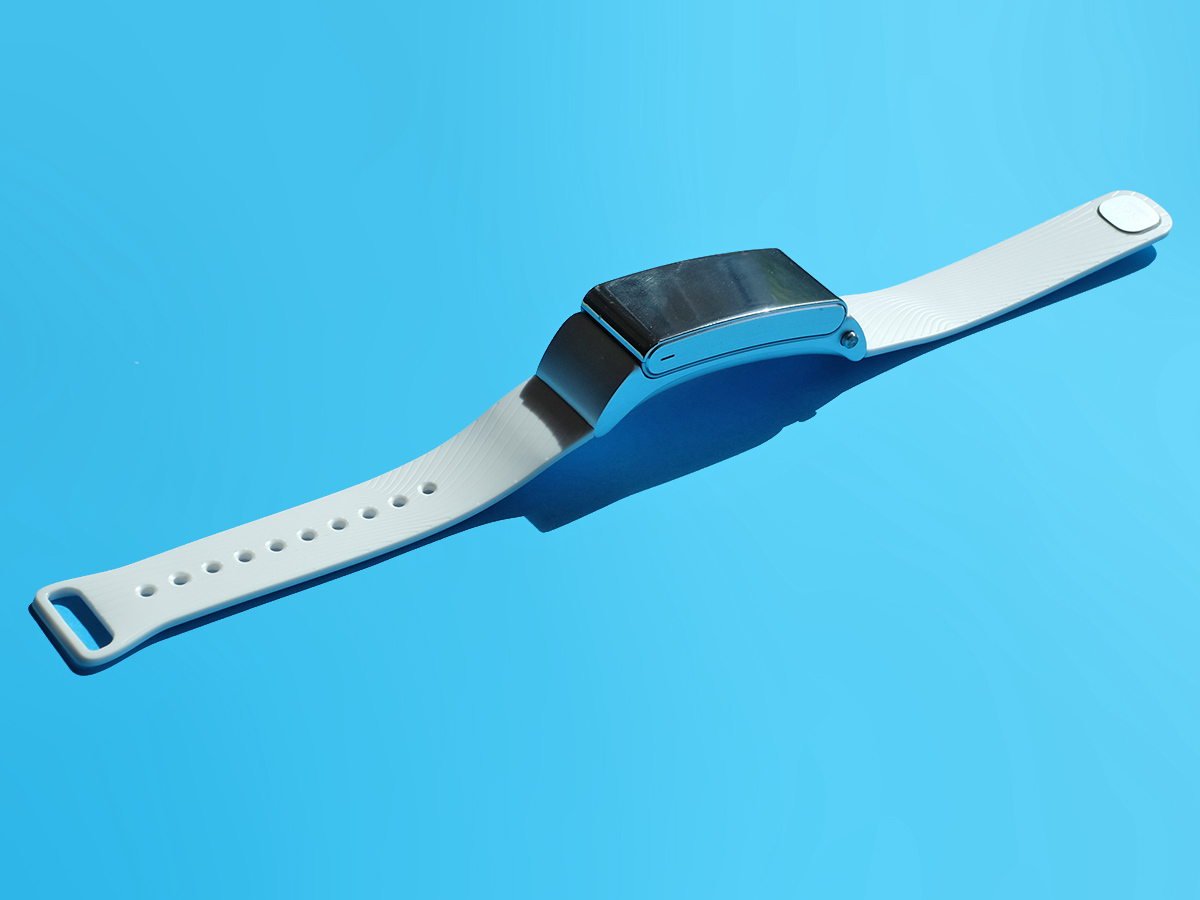
The Huawei TalkBand B2 is charmingly out of step with the rest of the smartwatch world. Where the Apple and Android Wear crowd try to do as much as they can to convince you they belong in your lives, aside from making phone calls the B2 does less than some simple fitness trackers.
It’s a real oddball, and one it’s hard to imagine all that many people buying. It doesn’t have battery life on its side anywhere near as much as something like the Withings Activité Pop, with its minuscule 90mAh battery lasting less than a week.
Still, I can’t find it in myself to be too mean because the Huawei TalkBand B2 is pretty easy to live with. And if you’re one of the few people who do make phone calls all the time, its whole Bluetooth headset mechanism does work surprisingly well.
Tech specs
| Screen | 0.7in POLED screen |
| Connectivity | microUSB and Bluetooth |
| Software | Proprietary OS |
Stuff Says…
Slick looks and smart design are nice, but don’t quite make up for the limited features and high price.
Good Stuff
Looks smart
Surprisingly slick implementation
Bad Stuff
Very expensive
Very limited smart features
A likely ridicule-magnet
Rubbish visibility in bright sunlight



